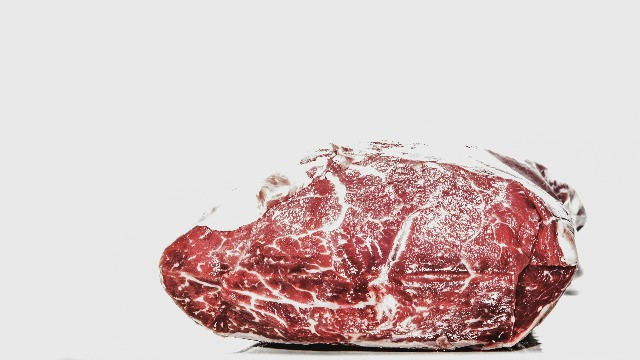As pet owners look for ways to provide a more natural and nutritious diet for their furry friends, many wonder: Can you feed dogs raw chicken? This question has sparked much debate among pet enthusiasts and veterinarians alike. While raw chicken is a common ingredient in many commercial raw diets, it also comes with risks that shouldn’t be ignored. In this blog, we’ll dive into the benefits, potential dangers, and best practices for feeding raw chicken to your dog, helping you make an informed decision for your pet’s health and well-being.
Curious about feeding your dog raw chicken? Discover the pros, cons, and essential safety tips to ensure your furry friend stays healthy. From raw meat benefits to proper preparation, this guide covers everything you need to know before adding raw chicken to your dog’s diet.
Can Dogs Eat Raw Meat?

Feeding raw meat to dogs has become a popular trend among pet owners seeking a more natural diet, but is it the right choice for your furry friend? Can dogs eat raw meat safely, or are there hidden risks you need to consider? Let’s explore the nutritional benefits, potential dangers, and what veterinarians have to say about incorporating raw meat, like chicken, into your dog’s diet.
Nutritional Benefits of Raw Meat for Dogs
Raw meat is packed with nutrients that mimic what a dog’s ancestors consumed in the wild. It provides:
- High-Quality Protein: Essential for muscle development, energy, and overall vitality.
- Natural Enzymes: Found in raw food, these enzymes can aid digestion and nutrient absorption.
- Omega-3 Fatty Acids: Especially in certain meats, these support healthy skin, coat, and brain function.
- No Artificial Additives: Unlike processed foods, raw meat offers pure, unaltered nutrition.
For many dogs, a diet including raw meat can lead to shinier coats, improved energy levels, and better dental health, as chewing on raw meat and bones can help clean teeth.
Risks to Consider When Feeding Dogs Raw Meat
While raw meat offers nutritional benefits, it also comes with risks that pet owners must address:
- Bacterial Contamination: Raw meat can carry harmful bacteria like Salmonella and E. coli, which may harm both your dog and your household.
- Digestive Issues: Some dogs may struggle to digest raw meat, leading to upset stomachs, diarrhea, or vomiting.
- Nutritional Imbalance: An all-meat diet lacks essential nutrients like calcium, fiber, and vitamins found in a well-balanced diet.
- Choking Hazards or Injuries: Bones in raw meat can splinter, causing choking or internal injuries.
Veterinary Perspective on Feeding Dogs Raw Meat
Veterinarians are divided on the topic of feeding dogs raw meat. Some advocate for its benefits when prepared properly, while others express concerns about safety and nutritional balance. Key points include:
- Breed and Health Factors: Certain breeds or dogs with compromised immune systems may not tolerate raw meat well.
- Preparation Matters: Veterinarians stress the importance of sourcing high-quality meat and following strict hygiene practices.
- Balanced Diet: Many vets recommend incorporating raw meat as part of a balanced diet rather than feeding it exclusively. Supplements or mixing with other foods may be necessary to meet your dog’s full nutritional needs.
How to Feed Raw Chicken to Dogs

f you’re considering adding raw chicken to your dog’s diet, you’re likely wondering, Can you feed dogs raw chicken safely, and how should you prepare it? Feeding raw chicken can offer numerous benefits, but it’s essential to follow proper steps to ensure your dog’s safety and health. Here’s a detailed guide to help you do it right.
Step 1: Choose High-Quality Raw Chicken
The first step is selecting the best raw chicken for your dog. Opt for:
- Fresh Chicken: Look for meat that’s fresh and free of any unpleasant odor.
- Organic or Free-Range Options: These are less likely to contain harmful additives or hormones.
- Trusted Sources: Purchase from reputable grocery stores or butchers to ensure quality and safety.
Step 2: Prepare the Chicken Safely
Proper preparation is crucial to prevent bacterial contamination:
- Thaw Safely: If frozen, thaw the chicken in the refrigerator rather than at room temperature.
- Cleanliness is Key: Wash your hands, utensils, and surfaces thoroughly before and after handling raw chicken.
- Remove Inedible Parts: Remove small or sharp bones that could pose a choking hazard.
Step 3: Portion the Chicken Appropriately
Feeding the right amount of raw chicken depends on your dog’s size, breed, and activity level:
- Small Dogs: Start with smaller portions, such as boneless cuts or finely chopped pieces.
- Medium to Large Dogs: Larger cuts, including chicken legs or thighs, can be suitable if the bones are safe for chewing.
- Monitor Weight: Adjust portions based on your dog’s weight and appetite to maintain a healthy body condition.
Step 4: Combine Raw Chicken with Other Foods
To ensure a balanced diet, consider mixing raw chicken with:
- Vegetables: Carrots, green beans, or spinach can provide additional nutrients.
- Supplements: Calcium, omega-3, or multivitamins may be needed to fill nutritional gaps.
- Other Proteins: Rotate chicken with other raw or cooked proteins to offer variety.
Step 5: Monitor Your Dog’s Reaction
When introducing raw chicken for the first time, keep an eye on your dog for any adverse reactions:
- Digestive Upset: Vomiting or diarrhea may indicate that raw chicken doesn’t suit your dog.
- Allergic Reactions: Watch for itching, hives, or unusual behavior
Can You Feed Dogs Raw Chicken Breast?

Yes, you can feed dogs raw chicken breast, but it must be done with care. Chicken breast is rich in protein, low in fat, and easy to digest, making it a nutritious addition to your dog’s diet. However, it also carries risks like bacterial contamination and nutritional imbalances if not prepared properly.
Can You Feed Dogs Raw Chicken Breast Every Day?
Feeding raw chicken breast daily can lead to nutritional deficiencies if not part of a balanced diet. While it’s a great protein source, it lacks vital nutrients like calcium, fiber, and certain vitamins. To maintain your dog’s health, raw chicken breast should be a component of a more diverse meal plan rather than the sole ingredient.
Benefits
- High-quality protein supports muscle and energy.
- Low fat, ideal for weight management.
- Gentle on digestion and rich in amino acids.
Risks
- Potential for bacteria like Salmonella.
- Nutritional deficiencies if fed alone.
- Digestive upset in some dogs.
Preparation Tips
- Source fresh, high-quality chicken.
- Wash hands and utensils to prevent contamination.
- Portion based on your dog’s size and activity.
- Mix with vegetables or supplements for a balanced diet.
While raw chicken breast can be a healthy treat, it’s not a complete diet. Consult your veterinarian to ensure it meets your dog’s specific needs.
Can I Feed My Dog Raw Chicken from the Grocery Store?
A common question among pet owners is, Can you feed dogs raw chicken from the grocery store? While it’s tempting to use readily available chicken, there are important factors to consider to ensure your dog’s safety and health.
Is Grocery Store Chicken Safe for Dogs?
Yes, you can feed dogs raw chicken from the grocery store, but it must be handled and prepared carefully. Most store-bought chicken is fit for human consumption, meaning it’s generally safe for dogs if proper precautions are taken. However, there are some risks to consider:
- Bacterial Contamination: Grocery store chicken may contain harmful bacteria like Salmonella or E. coli. While dogs have stronger stomach acids to handle some bacteria, they’re not immune to foodborne illnesses.
- Preservatives: Some chicken is treated with preservatives or solutions that may not be safe for dogs. Check the label for added ingredients.
- Quality Concerns: Lower-quality chicken may come from sources that use antibiotics or hormones, which could impact your dog’s health.
How to Safely Feed Grocery Store Raw Chicken
- Choose Fresh, High-Quality Chicken
- Practice Proper Hygiene
- Wash your hands, utensils, and surfaces thoroughly before and after handling raw chicken.
- Keep raw chicken separate from other foods to avoid cross-contamination.
- Freeze Before Feeding
- Freezing chicken for at least 2-3 weeks at a temperature below -4°F (-20°C) can help kill some harmful parasites and bacteria.
- Thaw it safely in the refrigerator before feeding.
Benefits of Using Grocery Store Chicken
- Convenience: Easily available and affordable.
- Nutritional Value: Rich in protein and amino acids, supporting muscle and overall health.
- Customizable Diets: Allows you to mix raw chicken with other ingredients like vegetables for a balanced diet.
Conclusion
So, can you feed dogs raw chicken? Yes, but it requires careful consideration and proper preparation. While grocery store raw chicken is convenient and packed with protein, it’s essential to choose high-quality, unseasoned cuts and handle them hygienically to minimize risks. Always ensure the chicken is fresh, free from harmful additives, and stored or frozen correctly to reduce the chances of bacterial contamination.
Feeding your dog raw chicken can be a healthy addition to their diet when done responsibly, but it’s not a complete meal on its own. For a balanced diet, combine it with other nutritious ingredients and consult your veterinarian to ensure it meets your dog’s specific needs. By following these guidelines, you can safely incorporate raw chicken into your pet’s meals and support their overall health.


